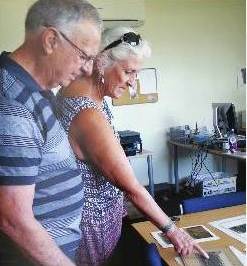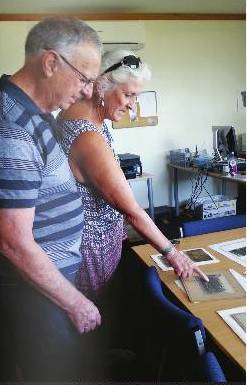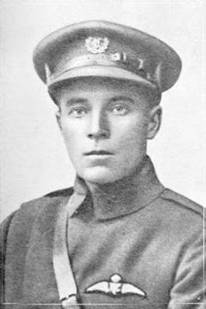by Sue Russell, republished from Raglan Chronicle with permission
A small team of local volunteers are collectively putting in hundreds of hours researching photos and creating the content for an ambitious and ‘very appropriate’ tribute to WW1 in this century year since Gallipoli.
The aspirations of the group include locating and positively identifying an image of every soldier from the district who fought overseas; a task demanding a level of forensic-like research both challenging and rewarding.
“We know that 151 men went off to war from Raglan and surrounds and of that 30 did not come home while about 60% who did came home injured. This experience is in line with casualty rates experienced throughout the country. You can imagine the impact such a loss would have had on the district.”
Help is sought to try to identify a number of significant original photos depicting mainly groups of soldiers from this area that have not been positively identified. Of the 151 named soldiers who will be listed on a special display, 86 have a photo to go with the name, so the WW1 group are keen to try to find a photo for each and every soldier listed.
“It is a task calling for a fair measure of patience and a bent toward detective work”, says one of the researchers, Kaz Willoughby.
Her job has been to cross-reference an array of historical information to arrive at conclusive proof of identification. So far this has resulted in a massive amount of data stored in the museum computer. The exhibition will include an audio-visual as well as static displays and will take pride of place inside the museum when it opens on 18 April.
Holding up a scaled-down model of the exhibition’s structure Ken says though there is a lot of work left to do everyone on board is really looking forward to seeing the fitting tribute settled and open to viewing. The exhibition will include letters written home by soldiers, diary notes while the audio-visual presentation will include interviews with families.
“If we were to extrapolate the number of soldier’s this district sent with today’s population it would see us fare welling about 1000 men. That’s how great this event was in our history.”
The stories aren’t just of the soldiers experiences either. How Raglan coped without the men for so many years and how the community rallied round in a multitude of ways to support the war fundraising effort will also feature.
In terms of enlistments, this district has the unique distinction of being the home of the very first New Zealander to join the war effort as a pilot. Herbert Ambrose Cooper, a Waitetuna farmer, signed up, having gained his pilots wings from an English flying school. When war broke out he joined the Royal Flying Corp. Cooper died in 1916 aged 29 years.
Work started in earnest on the exhibition a year ago, with funding gained from a share of the more than $17 million allocated through the Lotteries Board. A local contribution of 50% of what was received through the Lotteries Board was required to access the funding.
“Most of the 151 were volunteers with a small group conscripted late 1916. Every male from age 18-65 had to register and a ballot system determined who was selected.”
The area represented and celebrated in the exhibition is defined as the area west of the Waipa River from Te Akau to Aotea.
“We really do need the community’s help in locating photos of the men who served, so we can fill the Soldiers portrait display completely. We’re determined to not have one blank space next to a soldier’s name where a photo should be.”
Anyone who thinks they may have a connection with a person from this area who served in WW1 is encouraged to pop in to the museum to view the several photos still needing identification.
“The more people who can help us with these photos the better chance we have of actually identifying every person in them. That is our goal.”



